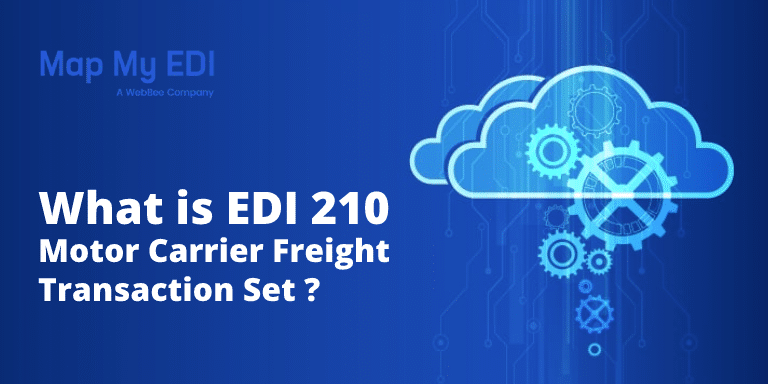How to Implement EDI 940 (Warehouse Shipping) Effectively?
In business transactions, EDI 940 (X12 940 Warehouse Shipping Order) works as an electronic document used to notify and instruct a third-party warehouse or third-party logistic provider (3PL), to ship an order.
EDI 940 specification
EDI is usually used by a seller, manufacturer, or wholesaler to approve a warehouse to carry a shipment to the buyer. In the business world, many well-known organizations use EDI 940 in confirming a shipment or changing or cancelling of previously submitted shipping order. The companies also use EDI 940 in a form of instructions for shipping goods from a third party warehouse in two different ways-
a. Instruct 3PL partner to send one type of product to many different destinations or
b. Send instructions to shipping various items to one location or destination
This documents also instructs the warehouse on what, when, and how much to ship.
The specific information provided in this transaction mainly includes: –
- The information of manufacturers
- Date of Delivery
- Descriptions of Items and their quantities
- Shipping Information such as location name and address, contact, etc
- Billing Information
- Information about Shipment Method
In addition, EDI 940, also provides additional information, depending on the types of goods to be shipped and preliminary agreements with the warehouse, and the information included is
- The type of pallet configuration (standard and non-standard)
- Transportation Requirements (like temperature or other specific conditions for transporting shipments)
- The information about the third party or carrier involved in the delivery
- Additional product information (production codes or batch numbers)
EDI 940 Format
EDI 940 follows the format of the ANSI X12 940 Transaction set and works as a formal request for the shipment of goods from the warehouse to the buyer’s location. This document is sent by suppliers and sellers to third-party logistics providers (3PLs). EDI 940 allows the depositors to recommend a warehouse to make a shipment, authenticate a shipment, modify or cancel shipment of previously transmitted order.
EDI Mapping Guide
EDI 940 document gives indications to the following parties: – the warehouse, the description of the warehouse’s customer, the customer of the account, the consignee (ship-to-address), and freight payor (if freight is sent the by third party pay), a three code number -940 and identifies the warehouse Shipping Order Transaction Set.
EDI 940 consists of the following segments:
Message Envelop / Group: –
- ISA Interchange Control Header
- GS Functional Group Header
Heading: –
- ST Business deal Set Header
- W05 Shipping Order recognition (N = Original Order)
- N1 Name such as ‘SF’ – Ship-from and ‘SF’ – Ship-from
- N3 Address Information
- G62 Date/Time (‘02’ – Requested Arrival ‘10’ – Pick-Up Date)
- NTE – Notes/Special directions (‘WHI’ Warehouse Instruction)
- W66 Warehouse Carrier Information
Detail (Begins detail loop): –
- LX – Assigned Number
- W01 – Line Item Detail – Warehouse
- G69 Line Item Detail – Description
- N9 Reference Identification
- W20 – Line-Item Detail (Miscellaneous)
- AMT – Monetary Amount
Summary: –
- W76 Total Shipping Order
- SE Transaction Set clip (the last segment of each transaction set)
Message Envelop / Group Footer: –
- GE Functional Group Trailer
- IEA Interchange Control Trailer
EDI 940 Document
In order to understand the usage and utility of the EDI 940 document, it is important to understand the workflow to exchange this document. Let us assume that the ordered products are delivered in advance to the 3PL warehouse and inventory of your store in your CRM is synchronized with an inventory of the 3PL warehouse.
Now, the customary workflow for exchanging warehouse shipping can be explained in the following steps: –
- Buyer or customer sends a Purchase Order (EDI 850) to the seller or supplying company of the ordered products.
- The seller of the ordered products replies in the form of EDI 855 Purchase Order Acknowledgement to either accept/reject/ modify the Purchase Order.
- On the basis of information procured through EDI 850 order, the supplier sends EDI 940 (Warehouse Shipping Order) to 3PL warehouse, describing order details.
- Thereafter, the warehouse picks the order, packs and then ships it.
- Next, the warehouse sends backs an EDI 945 (Warehouse Shipment Notification) to the seller confirming that the shipment was sent out to the buyer.
- After getting receipt of the EDI 945 transaction, the seller or supplier generates an EDI 856 (Advance Ship Notice) to notify about the upcoming delivery to the buyer.
- Thereafter, on receipt of goods, the supplier sends an EDI 810 (Invoice) to the buyer.
The workflow explains the usage of EDI 940 in the relationship between buyer, seller, and third-party warehouse.
In the business world, there are many benefits of using EDI 940 (Warehouse Shipping Order) over conventional methods of communications like paper, fax or email is unquestionable and they are: –
- It reduces the time of order processing
- It reduces expenses that are related to office supplies, stationery items, and delivery of documents, as well as office manual labour and salaries.
- It considerably reduces manual data entry which makes it easier for both warehouses and sellers.
- It reduces human errors and elimination of loss of documents.
- It promotes instant delivery and receipt of documents.
- It speeds up the processing of payments.
Looking into the numerous benefits of edi 940, it is preferred by most organizations to systematize their work. It makes the work simple, mechanized, and reliable as the results are auto-generated once the information is fed into the system correctly. The payments are processed quickly which is the prime concern of any of the businesses to run smoothly. In case you want to implement edi 940, read the setup and other specifications carefully before going for it. Understand the edi 940 formats with the help of an example before implementing it or using it for your actual transactions.
Hope it will give you flawless and error-free documentation of your business transactions done on edi 940. It will definitely relieve you from manual data entry and thus makes the task easier for both warehouses and sellers.
Read More





